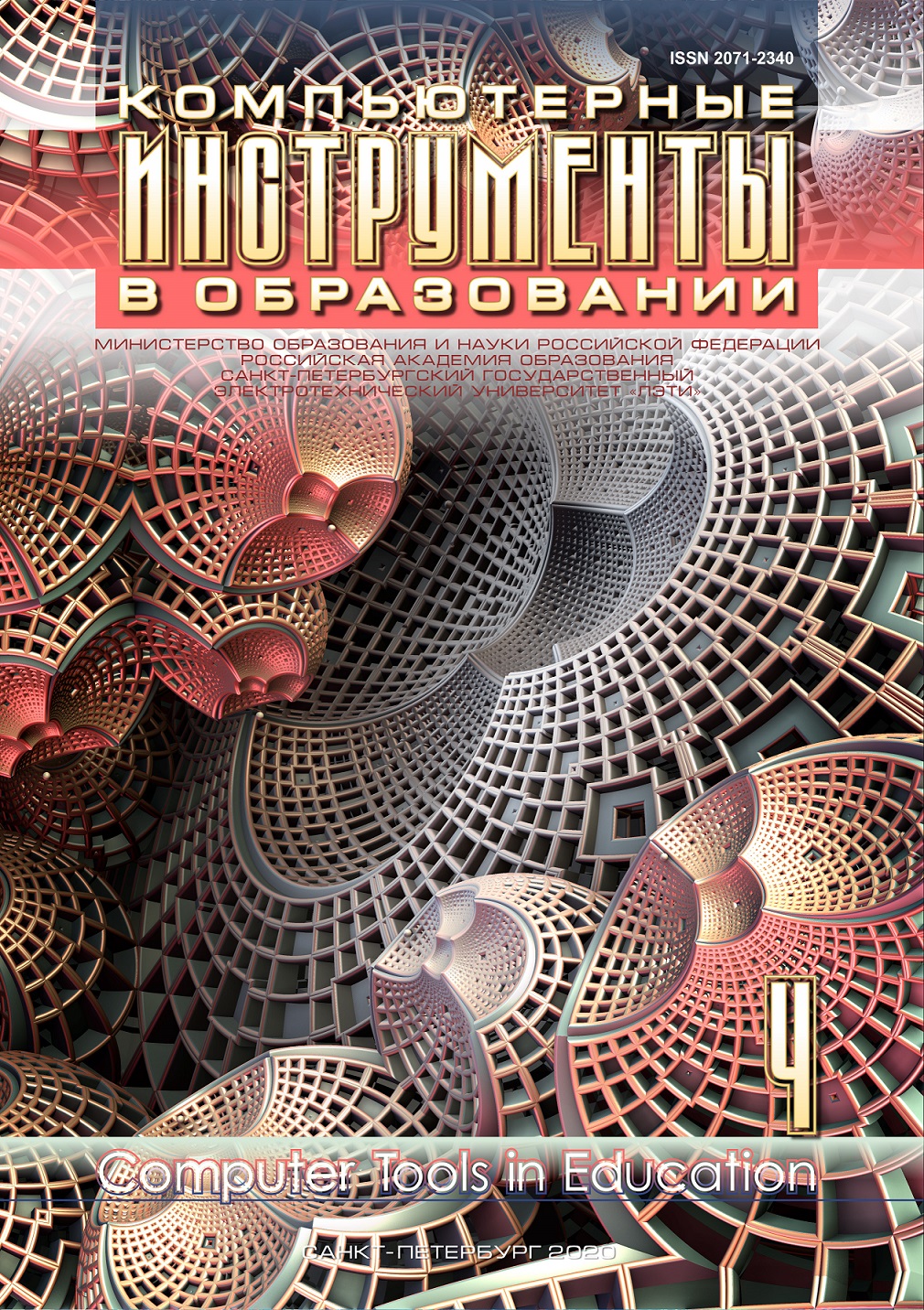Source code plagiarism analysis and visualization for programming course
Abstract
The problem of unfair borrowing in the academic environment is still relevant. Unfair borrowing, or plagiarism, is found today in various forms of academic activity, ranging from semester papers of students to dissertations of scientists. The development of communications and the global nature of interaction have led to a wide availability of materials that are easy to copy. This leads to the fact that it becomes easier for students to find a solution than to compose it. A separate problem is the unfair borrowing in the
works of students of educational institutions, which they perform in the framework of practical programming courses. As in the case of text, it is possible to detect plagiarism manually only in the smallest subsamples of data. Fortunately, today there are quite a large number of systems that allow you to automatically identify the similarity of the source code. Moreover, there are tools that allow you to aggregate the results of the
search for plagiarism by several different systems, which also increases the likelihood of detecting cases of unfair borrowing. At the same time, the use of these tools is still not so widespread in educational institutions. This article describes the process of plagiarism analysis built for use in practical programming courses, as well as a tool for interactive graph visualization of the results of plagiarism analysis.
References
V. A. Byvaltsev, I. A. Stepanov, E. G. Belykh, A. A. Kalinin, and L. A. Bardonova, “Plagiarism and academic integrity in science,” Annals of the Russian academy of medical sciences, vol. 72, no. 4, pp. 299–304, 2017 (in Russian); doi:10.15690/vramn788
A. I. Tsibin, Razrabotka informatsionnoi sistemy sozdaniya, sdachi i proverki zadanii po po distsipline ”Programmirovanie”, St. Petersburg, Russia, ITMO, 2019 (in Russian). [Online]. Available: https://github.com/tcibinan/flaxo/blob/dev/papers/paper_rus.pdf
E. A. Efimchik and A. I. Tsibin, “Raspredelennaya integrirovannaya informatsionnaya sistema organizatsii sdachi i proverki zadanii po programmirovaniyu: primenenie i osobennosti tekhnicheskoi realizatsii,” in Proc. of VII Congress of young scientists, ITMO, 2018, St. Peterburg, Russia, 2018 (in Russian). [Online]. Available: https://openbooks.itmo.ru/ru/file/7344/7344.pdf
N. A. Stepochkin, Razrabotka informatsionnoi sistemy analiza skhozhesti iskhodnogo koda reshenii zadach po programmirovaniyu v otkrytykh obrazovatel’nykh repozitoriyakh, St. Petersburg, Russia, ITMO, 2019 (in Russian). [Online]. Available: https://github.com/gitplag/gitplag/raw/master/thesis/thesis.pdf
A. Aiken, “Moss (for a Measure Of Software Similarity), a system for detecting software plagiarism,” [Soft], University of Berkeley, 2002. [Online]. Available: http://www.cs.berkeley.edu/~moss/
R. Bonifacio, “Effects of plagiarism intervention program in the research papers of central mindanao university students,” International Journal of Scientific & Technology Research, vol. 9, no. 2, pp. 5412–5418, 2020.
R. Franclinton and O. Karnalim, “A language-independent library for observing source code plagiarism,” Journal of Information Systems Engineering and Business Intelligence, vol. 5, no. 10, pp. 110–119, 2019; doi: 10.20473/jisebi.5.2.110-119
Z. Gniazdowski, “Detection of a source code plagiarism in a student programming competition,” Zeszyty Naukowe, vol. 13, no. 21, pp. 74–94, 2019; doi: 10.26348/znwwsi.21.74
O. Karnalim and G. Kurniawati, “Programming style on source code plagiarism and collusion detection,” International Journal of Computing, vol. 19, no. 1, pp. 27–38, 2020.
B. Lesner, R. Brixtel, C. Bazin, and G. Bagan, “A novel framework to detect source code plagiarism: now, students have to work for real!” in Proc. of the 2010 ACM Symposium on Applied Computing, Sierre, Switzerland, 2010, pp. 57–58; doi: 10.1145/1774088.1774101
V. Martins, D. Fonte, P. R. Henriques, and D. Da Cruz, “Plagiarism detection: A tool survey and comparison,” in 3rd SLATE. OASIcs, Schloss Dagstuhl-Leibniz-Zentrum fuer Informatik, Dagstuhl, Germany, vol. 38, 2014, pp. 143–158. [Online]; doi: 10.4230/OASIcs.SLATE.2014.143
G. Obaido, P. Ranchod, and R. Klein, Constructing and analysing plagiarism in student programs using graphs, 2017. [Online]. Available: https://www.researchgate.net/publication/319629298_Constructing_and_Analysing_Plagiarism_in_Student_Programs_Using_Graphs
D. Pawelczak, “Effects of plagiarism in introductory programming courses on the learning outcomes,” in Proc. 5th International Conference on Higher Education Advances (HEAd’19), Universitat Politecnica de Valencia, Valencia, Spain, 2019, pp. 623-631; doi: 10.4995/HEAd19.2019.9297
A. O. Portillo-Dominguez, V. Ayala-Rivera, E. Murphy, and J. Murphy, “A unified approach to automate the usage of plagiarism detection tools in programming courses,” in Proc. 12th International Conference on Computer Science and Education (ICCSE), Houston, TX, USA, 2017, pp. 18–23; doi: 10.1109/ICCSE.2017.8085456.
C. Wang, Z. Liu, and D. Liu, “Preventing and detecting plagiarism in programming course,” International Journal of Security and Its Applications, vol. 7, no. 5, pp. 269–278, 2013; doi: 10.14257/ijsia.2013.7.5.25

This work is licensed under a Creative Commons Attribution 4.0 International License.







